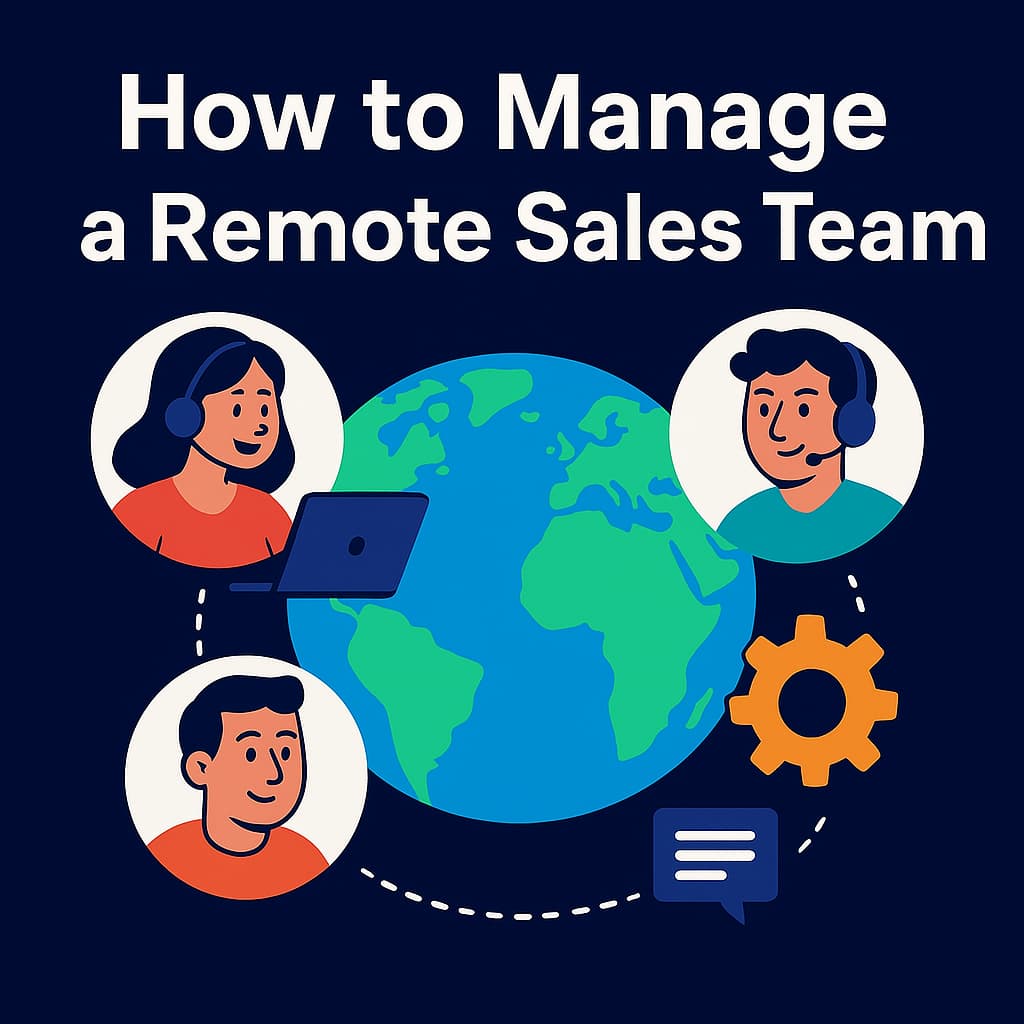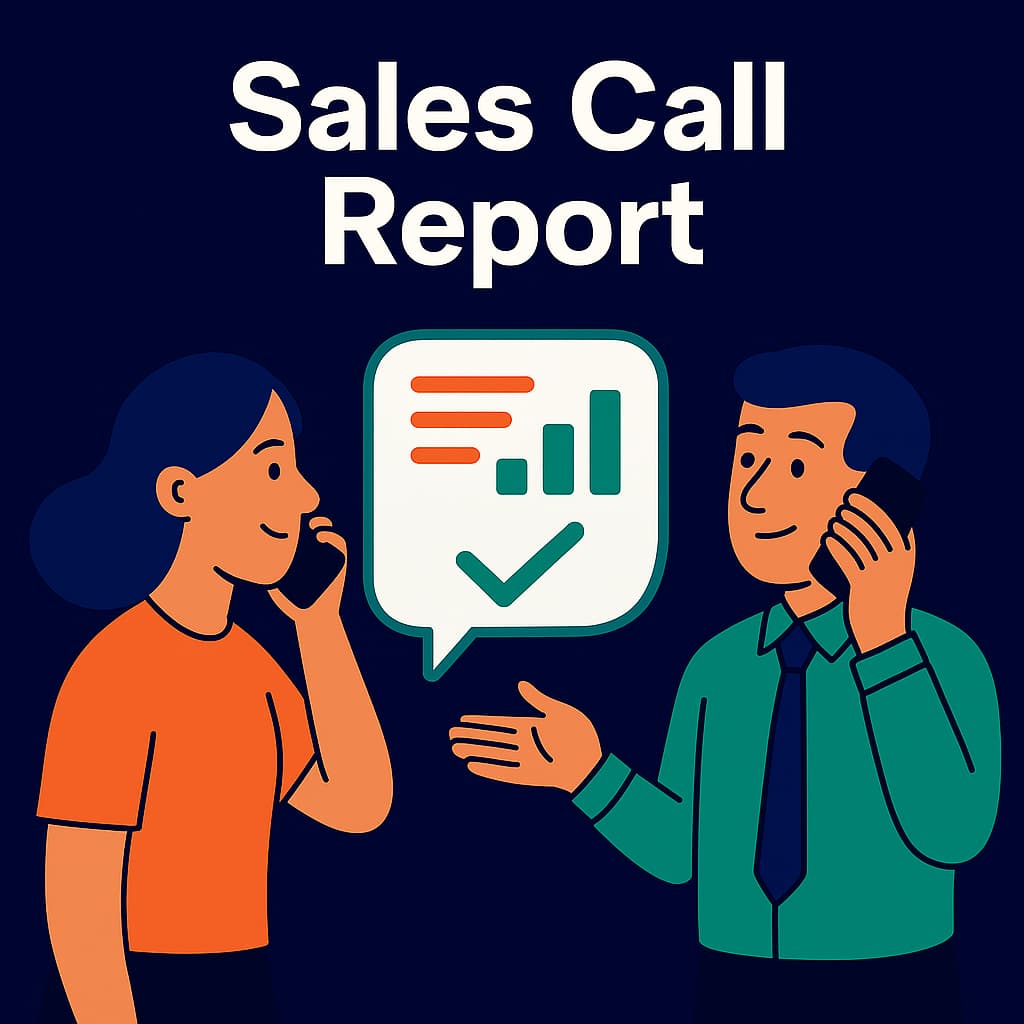
How to Improve Sales Performance: 10 Proven Strategies [2025]
Sales leaders face a paradox. Despite 79% of sales organizations reporting revenue growth (Salesforce State of Sales), 69% of reps missed quota in 2024, with average attainment at just 43% (Ebsta/Pavilion). Sellers are buried in admin, deal cycles are longer, and buyers expect more, with 5–6 decision-makers typically involved in B2B purchases.
To boost sales in 2025, leaders need discipline and smarter systems. Volume metrics alone no longer guarantee results — quality signals like uncovering needs, building trust, and moving deals forward matter most.
As Anthony Lannarino says
Before you can keep the commitments you make to other people, you first have to be disciplined enough to keep the commitments you make to yourself. (Salesforce Experts PDF)
This guide explores 10 proven strategies to improve sales performance, backed by research, expert insights, and practical examples.
Understanding Sales Performance: Definition and Current Challenges
Sales performance refers to the effectiveness of sales reps, teams, and sales processes in driving outcomes such as revenue growth, customer acquisition, and customer satisfaction. It blends quantitative measures like win rates and pipeline coverage with qualitative outcomes like customer experience and conversation quality.
The challenge? Sellers spend far too little time actually selling. Salesforce’s research shows that only about 28% of the workweek is spent in active selling activities, with the rest consumed by admin and internal tasks (Salesforce). Coupled with high quota miss rates (≈70%, Ebsta/Pavilion), the gap is clear: effort is being diverted away from customers.
💬 As Mike Weinberg stresses, “Top producers remain laser-focused on Job #1 — selling — and they devote more time to it than everyone else.” (Salesforce Experts)
Key Performance Indicators That Matter
Not every KPI drives better performance. Tracking too many sales metrics creates noise; a focused set provides signal. Reliable benchmarks include:
- Pipeline health: Ensure enough qualified opportunities at each stage.
- Sales cycle length: Measure efficiency by segment and track improvements over time.
- Stage-to-stage conversion: Identify bottlenecks rather than relying solely on overall win rate.
- Customer acquisition cost (CAC): Align selling efficiency with profitability.
- Average deal size: Larger contracts involve more stakeholders and risk, making this a critical benchmark.
Another key distinction is between lagging vs. leading indicators. Lagging indicators, like total revenue or quota attainment, show outcomes after the fact but don’t reveal where problems occur. Leading indicators, such as discovery-to-demo conversion rates or the percentage of calls with confirmed next steps, predict future performance and allow leaders to intervene early.
High-performing organizations emphasize these leading signals for real-time coaching.
👉 How to calculate these KPIs in practice:
- in Rate: Deals Won ÷ Opportunities Created (e.g., 25 wins ÷ 100 opportunities = 25%).
- Pipeline Coverage: Pipeline Value ÷ Quota (e.g., $4M pipeline ÷ $1M quota = 4× coverage, within the healthy 3–5× range).
- CAC: Total Sales & Marketing Costs ÷ New Customers Acquired (e.g., $200K ÷ 40 customers = $5K per customer).
Harvard Business Review emphasizes that clear process stages and data-driven measurement improve both win rates and forecast accuracy.
The Modern Sales Landscape
The buyer journey has changed dramatically. Customers are better informed, self-directed, and expect personalized, value-driven conversations. Organizations with buyer-centric sales processes outperform peers, and AI-enabled teams free sellers to spend more time on high-value conversations.
💬 As Forrester’s Principal Analyst, Mary Shea, noted in her report, The Future of Sales Enablement:
What organizations need to hire and train for are people who are digitally adept and creative.
Key takeaway: Sales performance today requires not just activity, but disciplined execution, relevant metrics, and real-time visibility into the sales process.
Strategies 1 - 3: Foundation Building (Goal Setting, Strategy, Team Assessment)
Before chasing tools or hacks, top-performing sales organizations get the foundations right and ensure a consistent sales process across reps. McKinsey found that companies in the top quartile of B2B sales effectiveness achieve 2× higher ROI than peers — not by working harder, but by executing a disciplined process (McKinsey).
The GROW model (Goal, Reality, Options, Way forward) remains a proven framework for structuring both strategy and coaching (Good Meetings), supported by robust sales tactics and techniques.
1. Setting SMART Goals
Without goals, sales efforts lack direction. Effective leaders set SMART goals (Specific, Measurable, Achievable, Relevant, Time-bound) that cascade from company strategy into rep-level targets.
Examples include:
- Increase win rate by 10% in Q2 through improved discovery calls.
- Reduce average sales cycle length by 10 days in SMB accounts.
- Boost pipeline coverage to 4× quota within 90 days.
2. Developing a Comprehensive Sales Strategy
A sales strategy defines who you target, how you position, and the tactics used across the sales funnel. Strong strategies are aligned with marketing so that sales and marketing efforts reinforce one another.
Core elements include:
- ICP definition: Anchored in customer data and market trends.
- Messaging: Content mapped to buyer journey stages.
- Playbooks: Repeatable approaches for lead generation, qualification, and closing.
💡 Conversation Intelligence tools like Claap let leaders compare top vs. average reps’ talk tracks, making it easy to refine positioning, messaging, and tactics with evidence instead of assumptions.
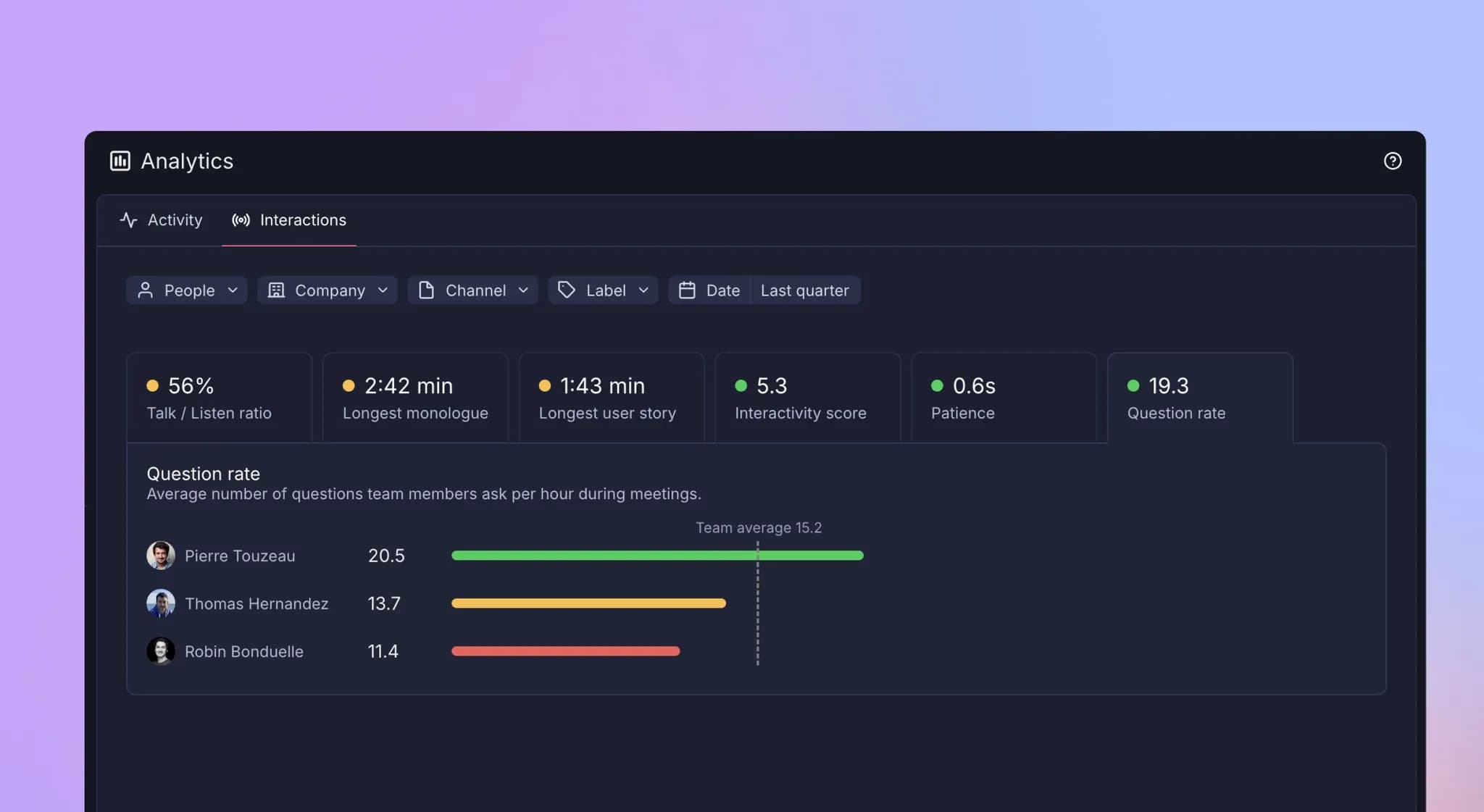
3. Conducting Sales Skills Assessment
Performance gaps often live at the skill level. A structured assessment reveals whether reps need help in discovery, objection handling, or closing.
Methods include:
- Self-assessment and peer review.
- Manager observation.
- Conversation data analysis — e.g. talk ratios, objection frequency, next-step clarity.
💡 Claap auto-scores discovery and demo calls, highlighting rep-specific coaching opportunities without manual review.
Strategies 4 - 5: Team Development and Training Excellence
Human capital is still the #1 lever for boosting performance. Classic benchmark: CSO Insights’ long-running research (2018) found effective enablement coaching lifted quota attainment by 10.6 points and win rates by +6.6 — a pattern that continues today, with Salesforce’s 2024 report highlighting how AI-powered enablement delivers even faster gains. Ongoing training programs build confidence and equip reps with the sales enablement tools they need.
4. Creating Effective Training Programs
Effective sales training links knowledge directly to pipeline outcomes, and blends product knowledge, customer-centric selling, and practice. The most successful programs feature:
- Onboarding modules that shorten ramp times.
- Role-playing for discovery and objection handling.
- Microlearning reinforced in the flow of work.
👉 Example: A mid-market SaaS company revamped onboarding by embedding real call snippets into training.Instead of reading scripts, new hires listened to playlists of how top reps handled objections. Ramp time dropped by three weeks, and early win rates improved by 12%.
5. Implementing Continuous Coaching
Coaching can’t just be quarterly; it must be continuous. Data shows reps who receive regular coaching outperform peers in both quota and win rates.
Best practices include:
- Weekly 1:1s with rep-specific insights.
- Group sessions targeting recurring issues.
- Tracking coaching ROI by measuring conversion lift.
👉 Mini case: One manufacturing sales team discovered through call analysis that reps weren’t consistently confirming next steps. After targeted coaching, stage-to-stage conversion jumped 15% in a single quarter.
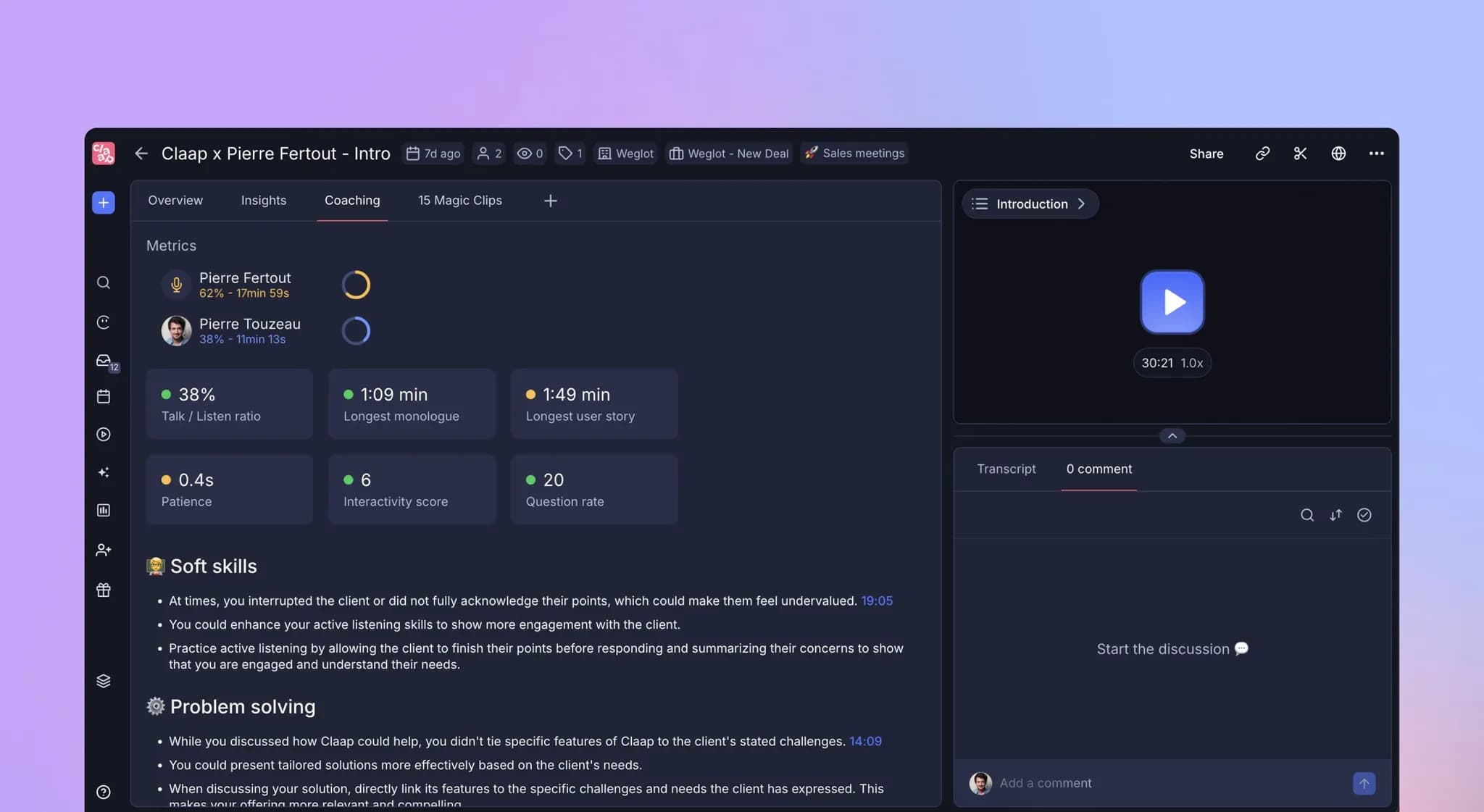
Strategies 6 - 8: Technology and Process Optimization
Technology should enable selling, not distract from it. Salesforce’s State of Sales 2024 found that reps spend just 28% of their week selling, with the rest eaten by admin. No surprise that AI-enabled sales orgs grew revenue at 83% vs. 66% without AI (HubSpot)
👉 Before/After Example:
- Before: Reps manually logged call notes and updated CRM, consuming 6–8 hours weekly.
- After: AI-powered call capture improved CRM hygiene, cut admin by 50%, and freed a full workday per rep.
As Salesforce notes, “AI frees sales reps for high-value tasks” — like discovery, building relationships, and closing deals.
6. CRM System Optimization
Centralized CRM simplifies customer data management. A CRM is only as good as the data inside it. Most CRMs become outdated because reps lack time for manual updates. Optimizing CRM means:
- Automating data capture from calls and emails.
- Standardizing pipeline stages.
- Surfacing performance metrics that truly matter (win rate, CAC, cycle length).
💡 Claap auto-updates CRM records from call transcripts — keeping data fresh without burdening reps.
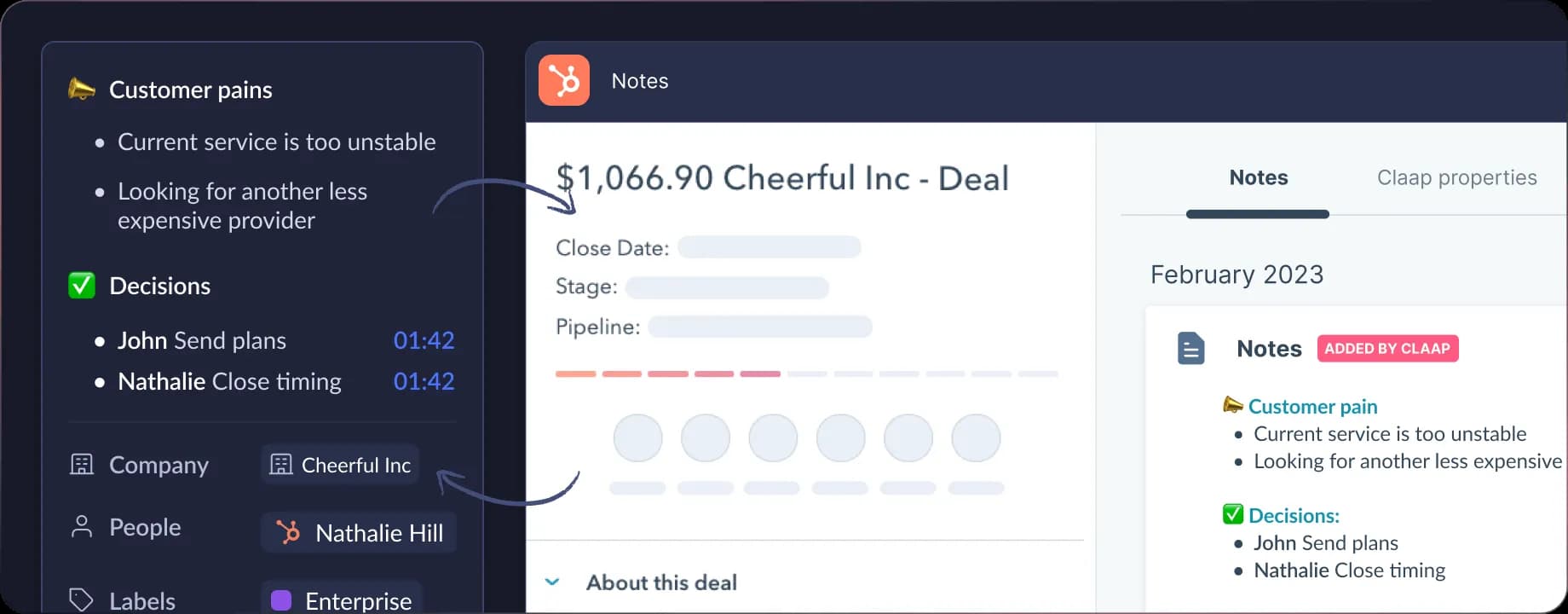
7. Sales Process Streamlining
A bloated sales process drags performance. Harvard Business Review emphasizes that companies with well-defined stages and gating criteria improve both win rates and forecast accuracy (HBR).
Practical steps:
- Audit funnel stages for redundancies.
- Apply stage-gating so only qualified deals advance.
- Cut cycle length by removing unnecessary approvals.
8. Implementing Sales Automation
Sales automation is more than cadences. Done right, it:
- Sends follow-up emails with next steps automatically.
- Creates CRM tasks without rep input.
- Scores leads based on customer interactions.
Classic insight: automation should free reps for conversations, not add more workflows.
Strategies 9 - 10: Customer Experience and Performance Monitoring
Sales success hinges on delivering exceptional customer experience. Data from Seismic shows that customer-centric reps achieve 22% higher win rates, while personalization increases deal likelihood 1.8×. (Seismic).
As Kyle Porter (SalesLoft) reminds us:
It means truly listening to customers and uncovering pain so you can provide a fitting solution and earn your buyer’s trust.
9. Enhancing Customer Experience
Great sales organizations map the entire customer journey and align sales and marketing touchpoints to deliver exceptional customer service to both new and existing customers.
Key actions:
- Address customer preferences and analyze behavior to build trust.
- Personalize outreach with contextual insights to increase engagement.
- Use feedback loops to adapt messaging.
- Deliver consistent value across channels to improve retention and lifetime value.
10. Performance Monitoring and Analytics
Measuring enablement impact drives results. CSO Insights (2018) showed measuring performance improved quota attainment by over 10 points. Salesforce and HubSpot confirm: what gets measured improves fastest.
Focus areas:
- Core KPIs: win rate, pipeline coverage, CAC.
- Sales efficiency: rep selling time, stage conversions.
- Training and coaching ROI.
- AB test constantly. A test-and-learn approach lets you compare two scenarios or hypotheses and see if you achieve any uplift.
Industry-Specific Applications
No two industries face the same sales challenges. The principles of performance improvement hold true, but the levers differ:
- Retail: Speed and omnichannel experience are critical. Buyers expect seamless integration across e-commerce and in-store. Sales teams need real-time visibility into inventory, pricing, and promotions.
- SaaS: Long cycles and multiple stakeholders make consultative selling vital. The Challenger methodology — reframing buyer thinking — still drives SaaS outcomes. Multi-threading (engaging at least three stakeholders per account) has become table stakes.
- Manufacturing/Industrial: Buyers prioritize technical expertise and ROI justification. Proof of efficiency and cost savings carries more weight than generic pitches. Live demos tied to production KPIs are especially persuasive.
- SMBs: Referrals often outperform cold outreach. Referred deals close at 25.6% vs. 9.3% for cold calls (Ebsta). SMB leaders who formalize referral programs often see significant CAC reductions.
Classic wisdom still applies: as Mark Hunter notes, “If we would deepen and lengthen the discovery process, we would shorten the close.”
Implementation Roadmap and Action Plan
Strategies only work when executed with discipline. A 30-60-90 day plan ensures momentum:
First 30 Days — Audit & Prioritize
- Review KPIs (win rates, cycle length, CAC).
- Analyze customer feedback and lost deals.
- Pinpoint 2–3 priority gaps in the sales process.
Next 60 Days — Test & Experiment
- Pilot new strategies in select teams or funnel stages.
- Measure performance data against control groups.
- Iterate based on early results. Here, you can run 2-week sprints with 1 to 5 experiments per sprint to test hypotheses and see results quickly.
👉 Example: One company piloted AI note-taking and CRM auto-updates in a single regional team for 30 days. Reps saved an average of 6 hours per week, reinvested in pipeline-building. Win rates in that group improved by 10% vs. the control group. Validating both time savings and outcomes gave leadership the confidence to roll out company-wide.
Day 90+ — Scale & Institutionalize
- Roll out proven strategies across the team.
- Document playbooks and embed in onboarding.
- Align sales and marketing around updated processes.
Audit → Test → Scale. This cycle ensures leaders gain valuable insights before committing to large-scale change.
Measuring Success and ROI
Sales leaders must prove that performance initiatives deliver measurable returns. Zendesk’s Value Selling framework offers a practical lens:
- Revenue Generation — prove deals get bigger.
- Competitive Differentiation — show how sellers stand out.
- Cost Reduction — highlight CAC or admin savings.
- Risk Mitigation — reduce forecast surprises and missed quotas.
Conclusion: Driving Sales Success in 2025
Improving sales performance in 2025 isn’t just ops work — it’s a leadership mandate. Teams that master these levers will outpace competitors in both revenue and resilience.
👉 Ready to see where your sellers can improve? Book a 15-minute Performance Baseline with Claap and uncover how AI coaching and conversation intelligence help your team hit targets — without extra tools or admin.
FAQs
1. What is the 70/30 rule in sales?
The 70/30 rule means top-performing sales reps spend around 70% of a conversation listening and only 30% talking — a ratio validated by Gong’s conversation data (Gong Labs). It builds trust and uncovers needs faster. This consultative approach ensures reps uncover customer needs, pain points, and buying signals. For sales managers, coaching reps to improve listening skills is one of the fastest ways to enhance sales performance.
2. What are the 5 C’s of sales success?
Classic frameworks emphasize the 5 C’s: Clarity, Consistency, Curiosity, Creativity, and Continuous learning. As Jim Keenan stresses, continuous learning is non-negotiable: “Read, read, read… then ask questions and expand your knowledge of everything.” Sales professionals who adopt the 5 C’s adapt better to market trends and sustain long-term sales success.
3. How long does it take to see improvements?
Performance gains appear within 60–90 days. Coaching improvements show up within weeks, while training ROI compounds over quarters (Qwilr benchmark). AI efficiencies, like saving 2 hours/day of admin, surface almost immediately (Salesforce).
4. What are the most important KPIs?
Pipeline coverage (3–5× quota), win rate, cycle length, and CAC are the pillars. Salesforce research confirms that disciplined process measurement drives better forecasts and higher revenue growth (HBR).
5. What role does CRM play in sales performance?
CRM is the single source of truth of what’s happening in your pipeline, but adoption often lags without automation. Properly configured, it becomes a value driver instead of an administrative burden—helping ensure you don’t miss follow-ups, steps, or high-potential leads.
6. How can AI improve performance?
AI adoption doubled in a year, with AI-enabled teams growing revenue faster (HubSpot). It automates CRM hygiene, creates tasks, and highlights coaching needs — freeing reps to sell.
.jpg)
